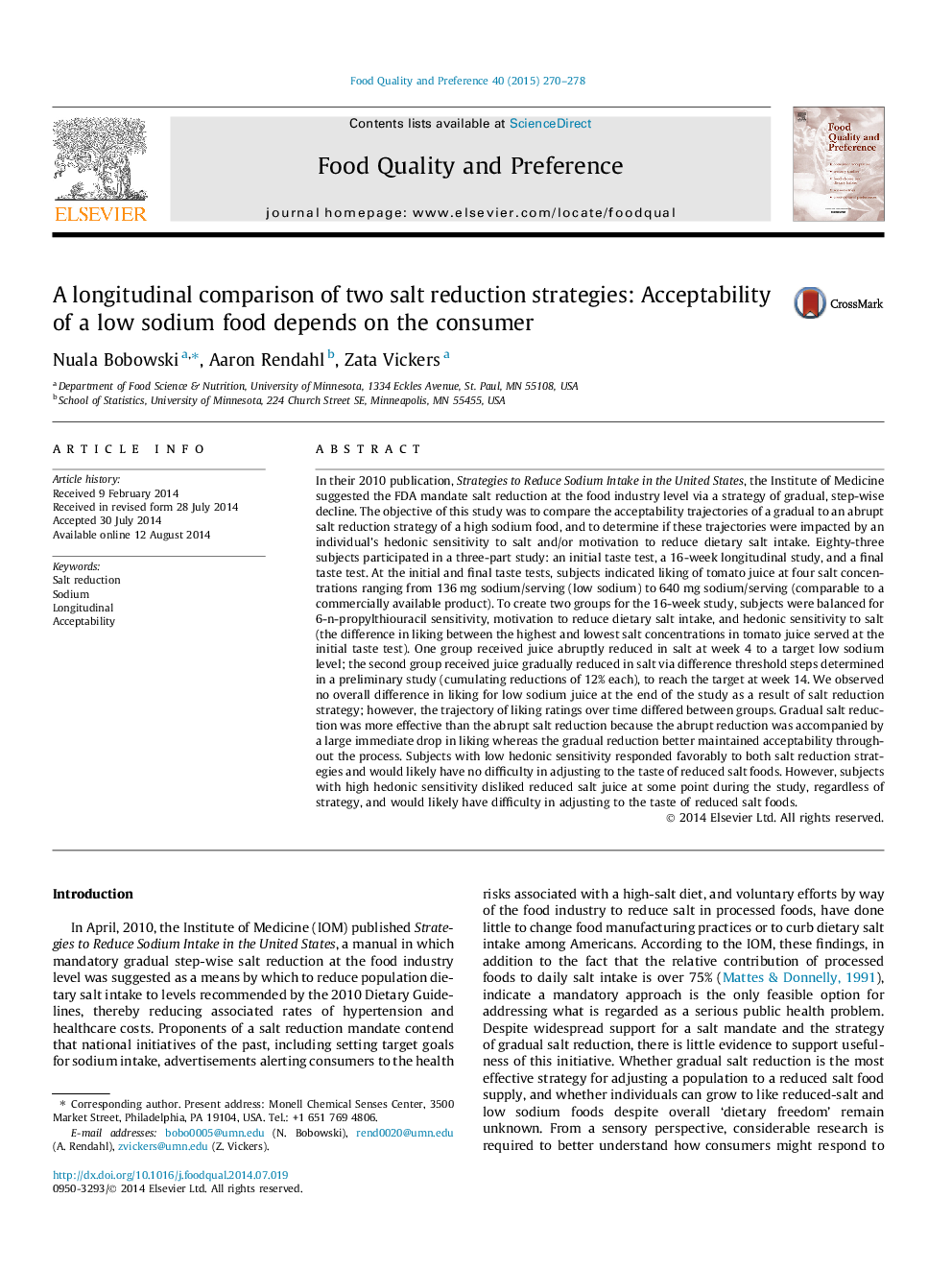| کد مقاله | کد نشریه | سال انتشار | مقاله انگلیسی | نسخه تمام متن |
|---|---|---|---|---|
| 4317039 | 1613157 | 2015 | 9 صفحه PDF | دانلود رایگان |
• Subjects were randomized to abrupt or gradual salt reduction strategy groups.
• Groups consumed tomato juice abruptly or gradually reduced in salt over 16 weeks.
• Liking for juice was measured over the course of the study.
• There was no difference in liking between groups at study end.
• Individual differences were important in determining strategy effectiveness.
In their 2010 publication, Strategies to Reduce Sodium Intake in the United States, the Institute of Medicine suggested the FDA mandate salt reduction at the food industry level via a strategy of gradual, step-wise decline. The objective of this study was to compare the acceptability trajectories of a gradual to an abrupt salt reduction strategy of a high sodium food, and to determine if these trajectories were impacted by an individual’s hedonic sensitivity to salt and/or motivation to reduce dietary salt intake. Eighty-three subjects participated in a three-part study: an initial taste test, a 16-week longitudinal study, and a final taste test. At the initial and final taste tests, subjects indicated liking of tomato juice at four salt concentrations ranging from 136 mg sodium/serving (low sodium) to 640 mg sodium/serving (comparable to a commercially available product). To create two groups for the 16-week study, subjects were balanced for 6-n-propylthiouracil sensitivity, motivation to reduce dietary salt intake, and hedonic sensitivity to salt (the difference in liking between the highest and lowest salt concentrations in tomato juice served at the initial taste test). One group received juice abruptly reduced in salt at week 4 to a target low sodium level; the second group received juice gradually reduced in salt via difference threshold steps determined in a preliminary study (cumulating reductions of 12% each), to reach the target at week 14. We observed no overall difference in liking for low sodium juice at the end of the study as a result of salt reduction strategy; however, the trajectory of liking ratings over time differed between groups. Gradual salt reduction was more effective than the abrupt salt reduction because the abrupt reduction was accompanied by a large immediate drop in liking whereas the gradual reduction better maintained acceptability throughout the process. Subjects with low hedonic sensitivity responded favorably to both salt reduction strategies and would likely have no difficulty in adjusting to the taste of reduced salt foods. However, subjects with high hedonic sensitivity disliked reduced salt juice at some point during the study, regardless of strategy, and would likely have difficulty in adjusting to the taste of reduced salt foods.
Journal: Food Quality and Preference - Volume 40, Part B, March 2015, Pages 270–278
